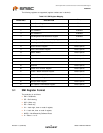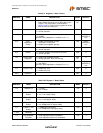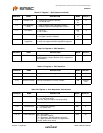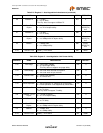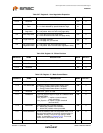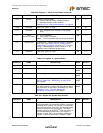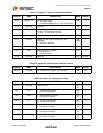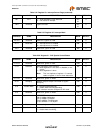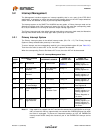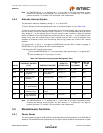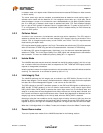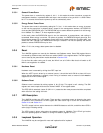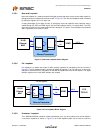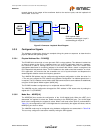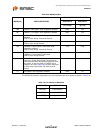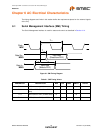
Small Footprint RMII 10/100 Ethernet Transceiver with HP Auto-MDIX Support
Datasheet
Revision 1.0 (05-28-09) 48 SMSC LAN8720/LAN8720i
DATASHEET
5.2 Interrupt Management
The Management interface supports an interrupt capability that is not a part of the IEEE 802.3
specification. It generates an active low asynchronous interrupt signal on the nINT output whenever
certain events are detected as setup by the Interrupt Mask Register 30.
The Interrupt system on the SMSC The LAN8720 has two modes, a Primary Interrupt mode and an
Alternative Interrupt mode. Both systems will assert the nINT pin low when the corresponding mask
bit is set, the difference is how they de-assert the output interrupt signal nINT.
The Primary interrupt mode is the default interrupt mode after a power-up or hard reset, the Alternative
interrupt mode would need to be setup again after a power-up or hard reset.
5.2.1 Primary Interrupt System
The Primary Interrupt system is the default interrupt mode, (Bit 17.6 = ‘0’). The Primary Interrupt
System is always selected after power-up or hard reset.
To set an interrupt, set the corresponding mask bit in the interrupt Mask register 30 (see Table 5.37).
Then when the event to assert nINT is true, the nINT output will be asserted.
When the corresponding Event to De-Assert nINT is true, then the nINT will be de-asserted.
Note 5.1 If the mask bit is enabled and nINT has been de-asserted while ENERGYON is still high,
nINT will assert for 256 ms, approximately one second after ENERGYON goes low when
the Cable is unplugged. To prevent an unexpected assertion of nINT, the ENERGYON
interrupt mask should always be cleared as part of the ENERGYON interrupt service
routine.
Table 5.37 Interrupt Management Table
MASK
INTERRUPT SOURCE
FLAG INTERRUPT SOURCE
EVENT TO
ASSERT nINT
EVENT TO
DE-ASSERT nINT
30.7 29.7 ENERGYON 17.1 ENERGYON Rising 17.1
(Note 5.1)
Falling 17.1 or
Reading register 29
30.6 29.6 Auto-Negotiation
complete
1.5 Auto-Negotiate
Complete
Rising 1.5 Falling 1.5 or
Reading register 29
30.5 29.5 Remote Fault
Detected
1.4 Remote Fault Rising 1.4 Falling 1.4, or
Reading register 1 or
Reading register 29
30.4 29.4 Link Down 1.2 Link Status Falling 1.2 Reading register 1 or
Reading register 29
30.3 29.3 Auto-Negotiation
LP Acknowledge
5.14 Acknowledge Rising 5.14 Falling 5.14 or
Read register 29
30.2 29.2 Parallel Detection
Fault
6.4 Parallel
Detection Fault
Rising 6.4 Falling 6.4 or
Reading register 6, or
Reading register 29
or
Re-Auto Negotiate or
Link down
30.1 29.1 Auto-Negotiation
Page Received
6.1 Page Received Rising 6.1 Falling of 6.1 or
Reading register 6, or
Reading register 29
Re-Auto Negotiate, or
Link Down.



